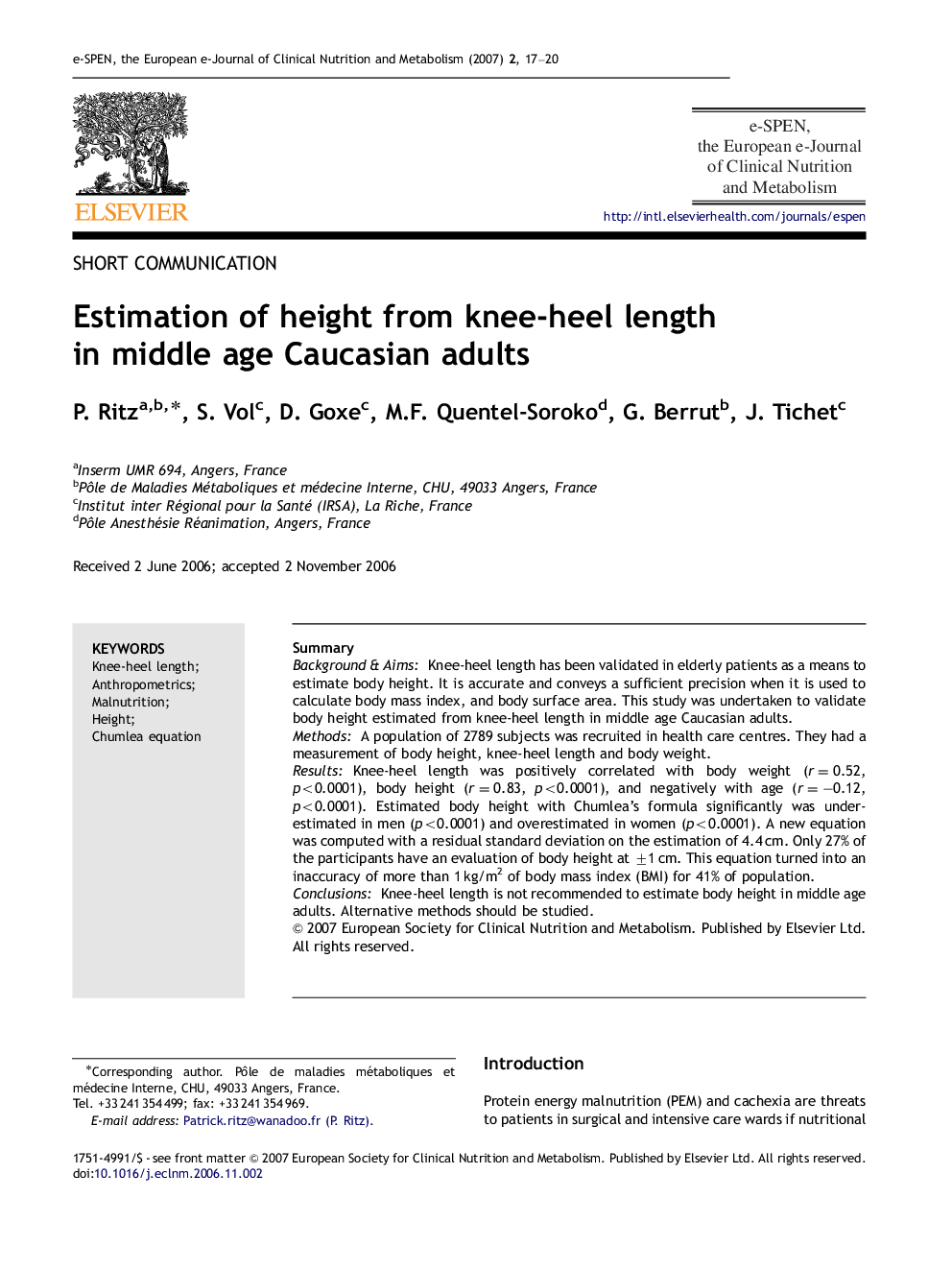| Article ID | Journal | Published Year | Pages | File Type |
|---|---|---|---|---|
| 2685581 | e-SPEN, the European e-Journal of Clinical Nutrition and Metabolism | 2007 | 4 Pages |
SummaryBackground & AimsKnee-heel length has been validated in elderly patients as a means to estimate body height. It is accurate and conveys a sufficient precision when it is used to calculate body mass index, and body surface area. This study was undertaken to validate body height estimated from knee-heel length in middle age Caucasian adults.MethodsA population of 2789 subjects was recruited in health care centres. They had a measurement of body height, knee-heel length and body weight.ResultsKnee-heel length was positively correlated with body weight (r=0.52, p<0.0001), body height (r=0.83, p<0.0001), and negatively with age (r=−0.12, p<0.0001). Estimated body height with Chumlea's formula significantly was underestimated in men (p<0.0001) and overestimated in women (p<0.0001). A new equation was computed with a residual standard deviation on the estimation of 4.4 cm. Only 27% of the participants have an evaluation of body height at ±1 cm. This equation turned into an inaccuracy of more than 1 kg/m2 of body mass index (BMI) for 41% of population.ConclusionsKnee-heel length is not recommended to estimate body height in middle age adults. Alternative methods should be studied.
